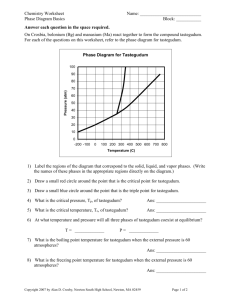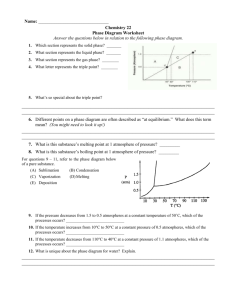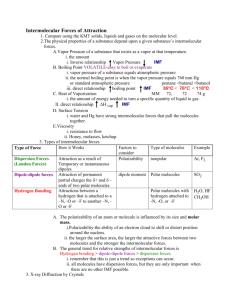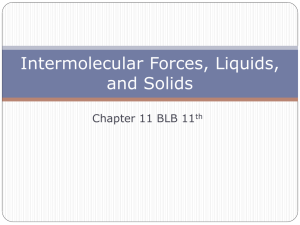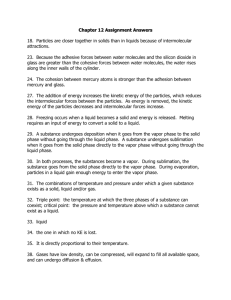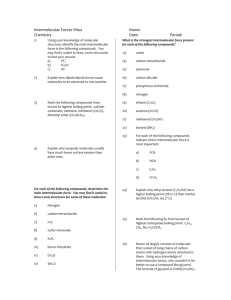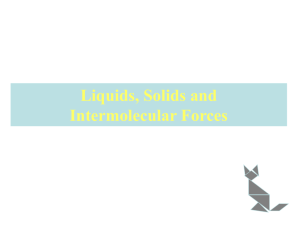Phase Diagram Worksheet: Tastegudum & Water
advertisement
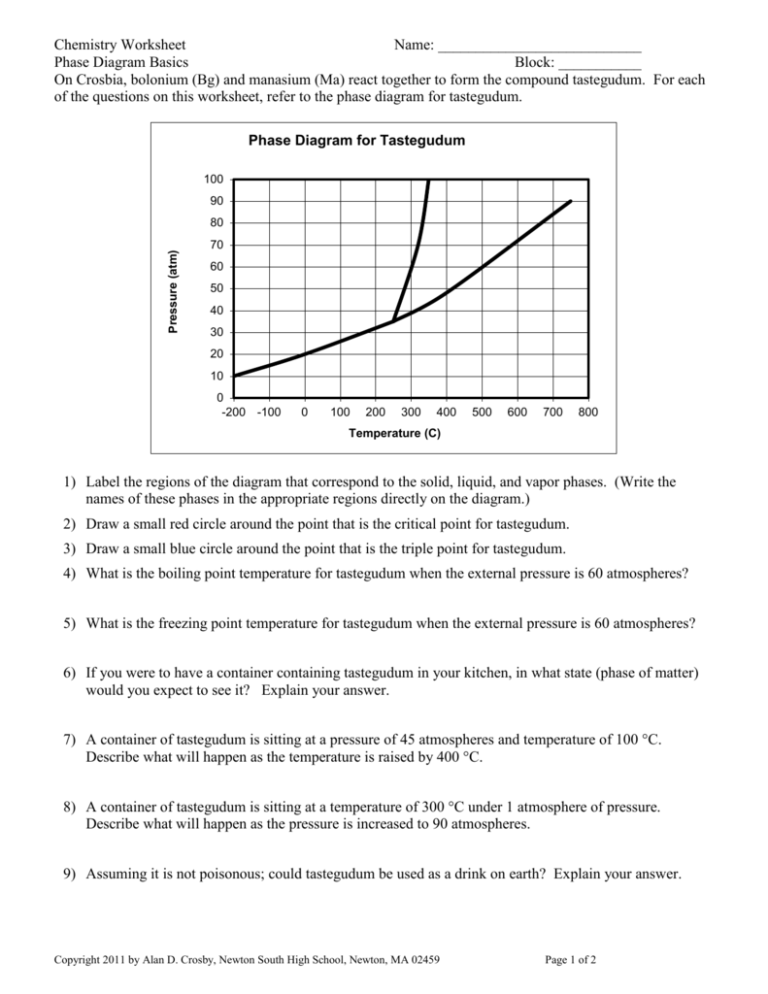
Chemistry Worksheet Name: ___________________________ Phase Diagram Basics Block: ___________ On Crosbia, bolonium (Bg) and manasium (Ma) react together to form the compound tastegudum. For each of the questions on this worksheet, refer to the phase diagram for tastegudum. Phase Diagram for Tastegudum 100 90 Pressure (atm) 80 70 60 50 40 30 20 10 0 -200 -100 0 100 200 300 400 500 600 700 800 Temperature (C) 1) Label the regions of the diagram that correspond to the solid, liquid, and vapor phases. (Write the names of these phases in the appropriate regions directly on the diagram.) 2) Draw a small red circle around the point that is the critical point for tastegudum. 3) Draw a small blue circle around the point that is the triple point for tastegudum. 4) What is the boiling point temperature for tastegudum when the external pressure is 60 atmospheres? 5) What is the freezing point temperature for tastegudum when the external pressure is 60 atmospheres? 6) If you were to have a container containing tastegudum in your kitchen, in what state (phase of matter) would you expect to see it? Explain your answer. 7) A container of tastegudum is sitting at a pressure of 45 atmospheres and temperature of 100 °C. Describe what will happen as the temperature is raised by 400 °C. 8) A container of tastegudum is sitting at a temperature of 300 °C under 1 atmosphere of pressure. Describe what will happen as the pressure is increased to 90 atmospheres. 9) Assuming it is not poisonous; could tastegudum be used as a drink on earth? Explain your answer. Copyright 2011 by Alan D. Crosby, Newton South High School, Newton, MA 02459 Page 1 of 2 Chemistry Worksheet Name: ___________________________ Phase Diagram Basics Block: ___________ Water is an abundant substance on the surface of earth, and is perhaps the single most important substance in terms all life, as well as for the formation and continuing changes of the earth’s crust. 1. Draw a Lewis structure, and sketch a picture that represents a single water molecule. 2. Describe the chemical bonds of the water molecule. 3. Draw a picture of at least 15 water molecules in the liquid phase. Use a simple representation for water molecules, such as 4. Describe the intermolecular forces that exist between water molecules in the liquid phase. 5. Draw a picture of at least 5 water molecules in the vapor phase. 6. Draw a picture that shows what happens when water boils (liquid to gas). 7. Explain what happens to the water molecules during the boiling process with regard to the intramolecular forces (chemical bonds) and the intermolecular forces. 8. Describe the intermolecular forces that exist between water molecules in the vapor phase. Copyright 2011 by Alan D. Crosby, Newton South High School, Newton, MA 02459 Page 2 of 2
